Coronavirus would have catapulted Peruvian ginger exports
Published on 17 July 2020
The use of the tuber as a decongestant and anti-inflammator of the respiratory tract could be the reason that explains the increase in sales abroad between February and May.
The impact of the coronavirus has generally been negative for the global economy. However, some health-related products have benefited, even in response to a different consumption pattern than that determined by demand.
In the case of ginger or kion, its intense perfume may not have been the reason why its exports increased in February this year. The tuber used in oriental foods, in carbonated drinks and pastry with Anglo-Saxon influence, has healing properties for the symptoms of diseases that affect the respiratory system. An article published by the United States National Center for Biotechnological Information (NCBI) highlights that gingerol and shogaol help to dilate the airways, making it effective as a therapeutic element to facilitate the transit of oxygen and the evacuation of toxic gases from the lungs.
Interestingly, the demand for ginger has increased incredibly around the world in parallel with the explosion of the coronavirus pandemic, suggesting increased demand from those who want to reinforce the treatment of symptoms with natural products. The following graph shows the evolution of Peruvian ginger exports in the last three years and shows the referred rise. It should be noted that the statistics as of June may be pending updating, so the blue line could end above the black one.
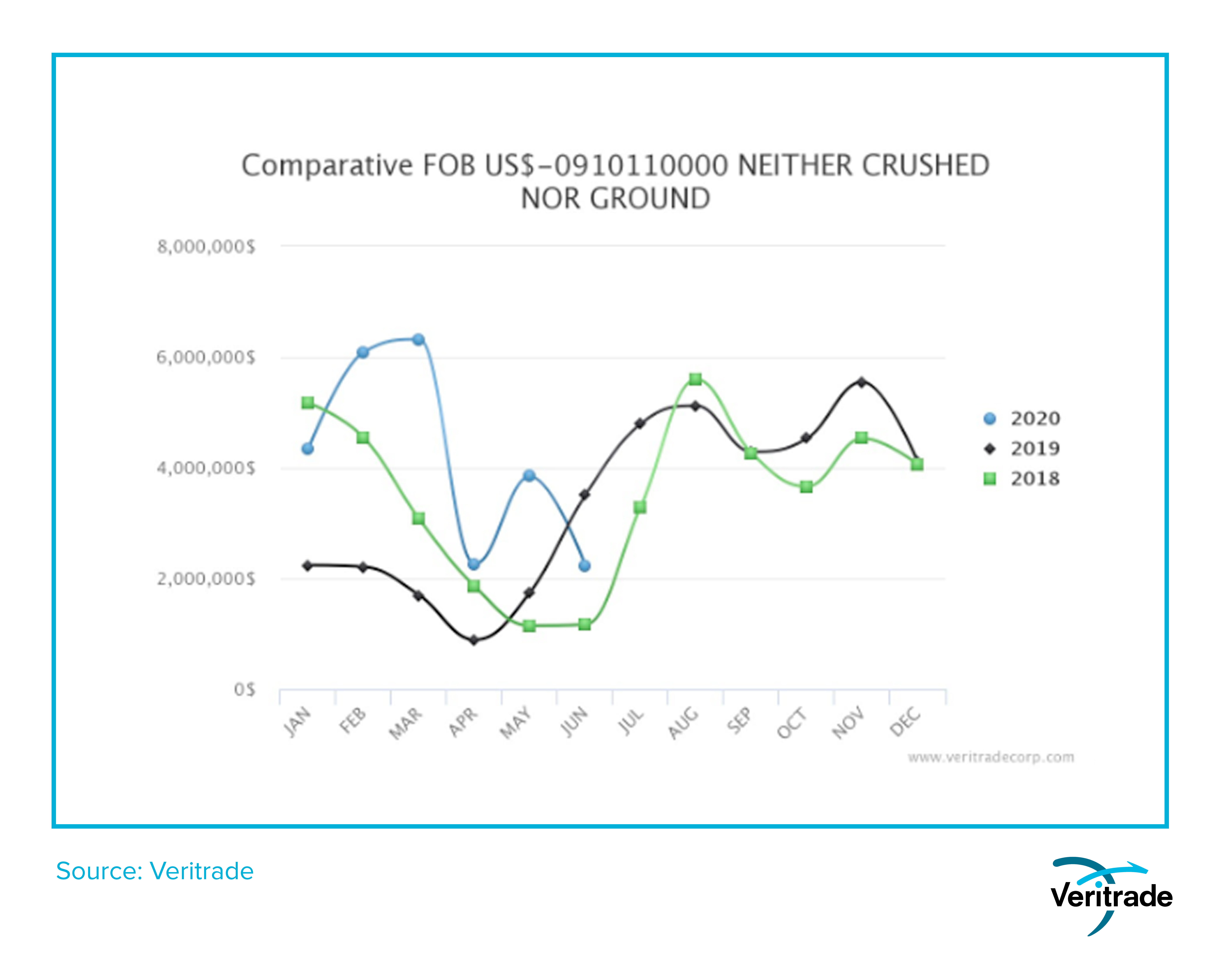
It should be noted that the rise is the result of a greater movement of merchandise, and not of an increase in prices, which were higher in the first half of last year. The comparison between the values of both periods can be seen in the following graph.
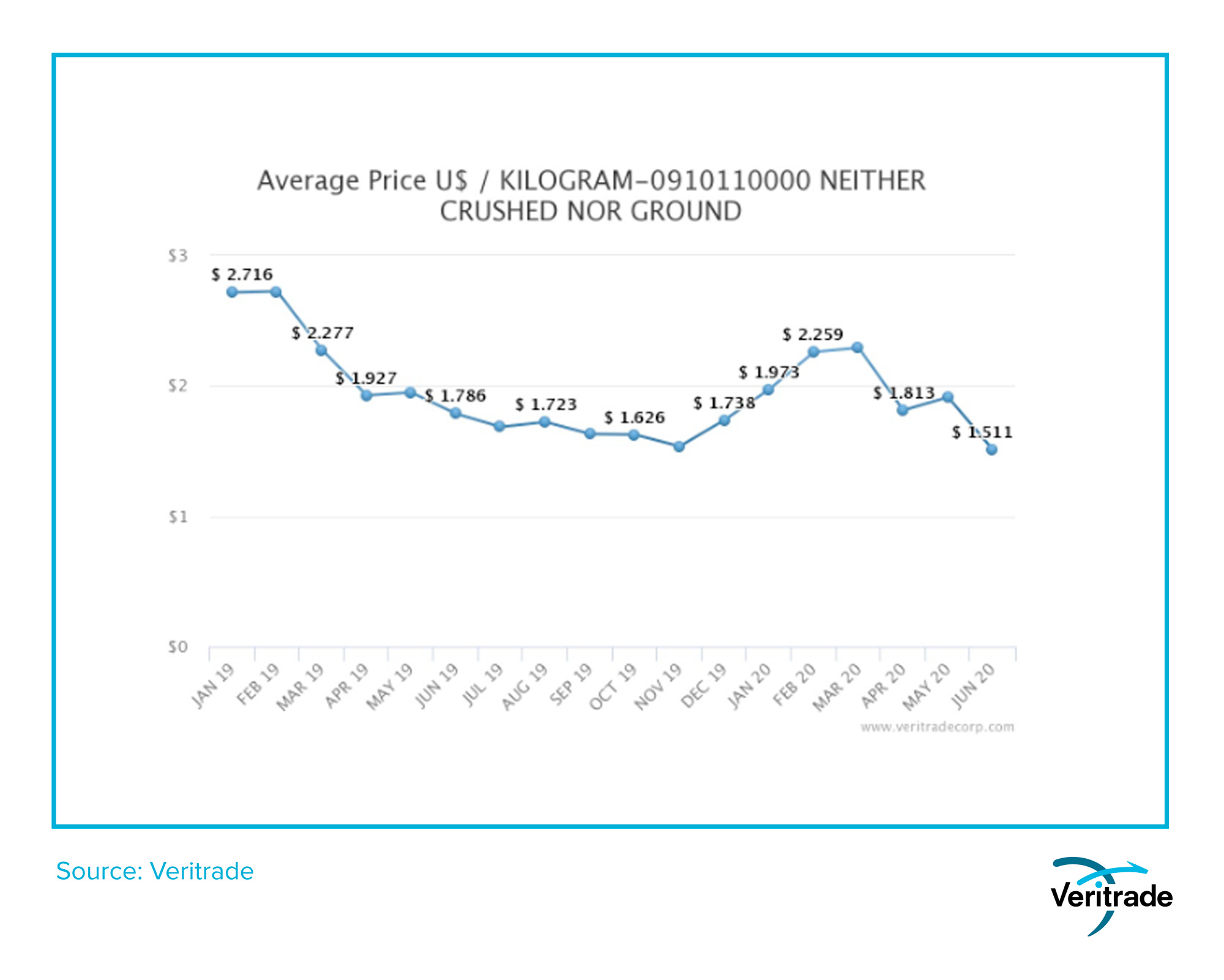
Consequently, the high availability of the product has allowed 2020 to have a very good start for Peruvian ginger producers and exporters. The March peak has allowed the average price of the year to be above two dollars per kilogram, but the rest of the months the difference is based on quantity. The following two boxes show the comparison results of the first semester of 2019 with the same period of 2020.
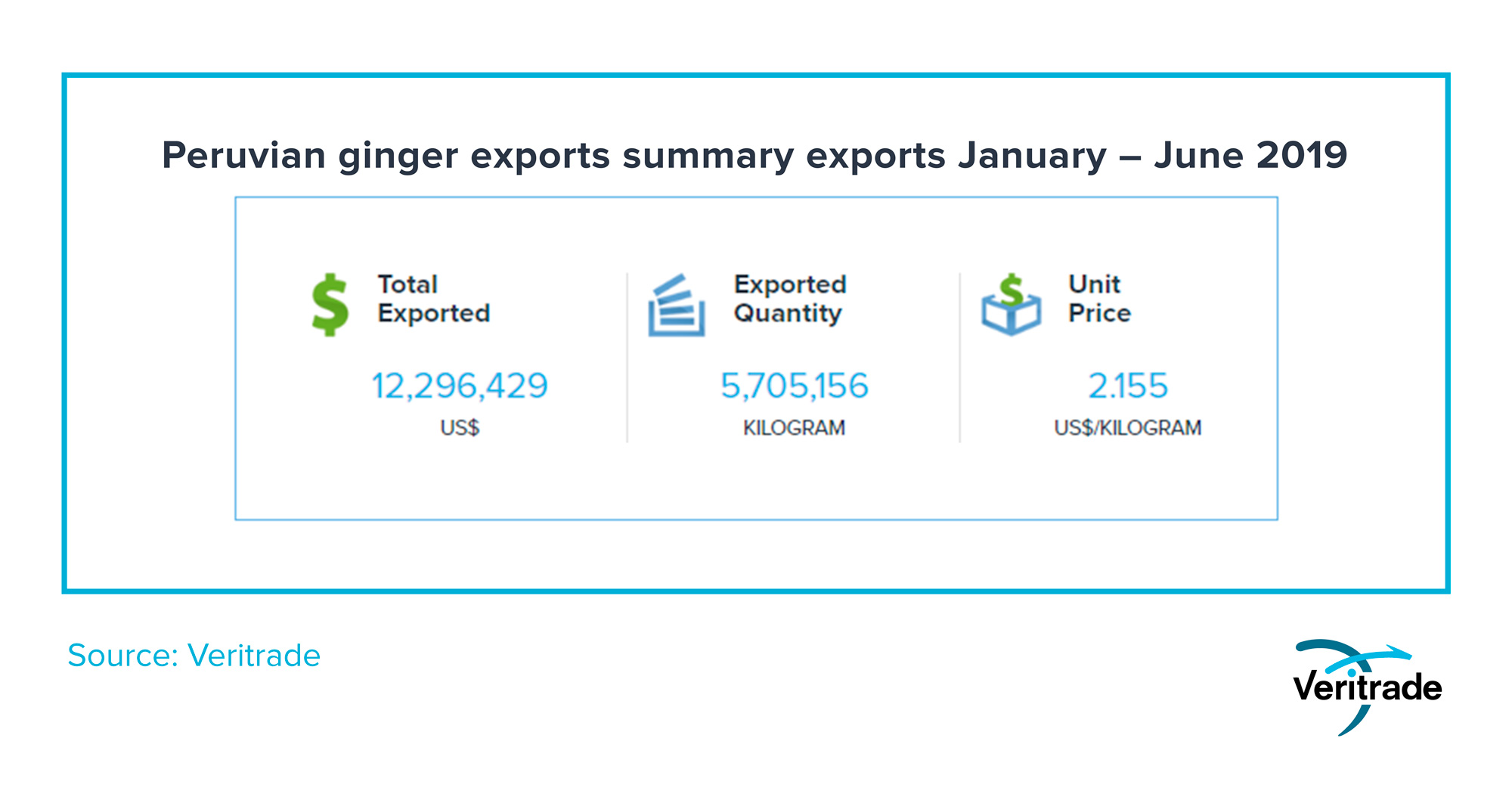
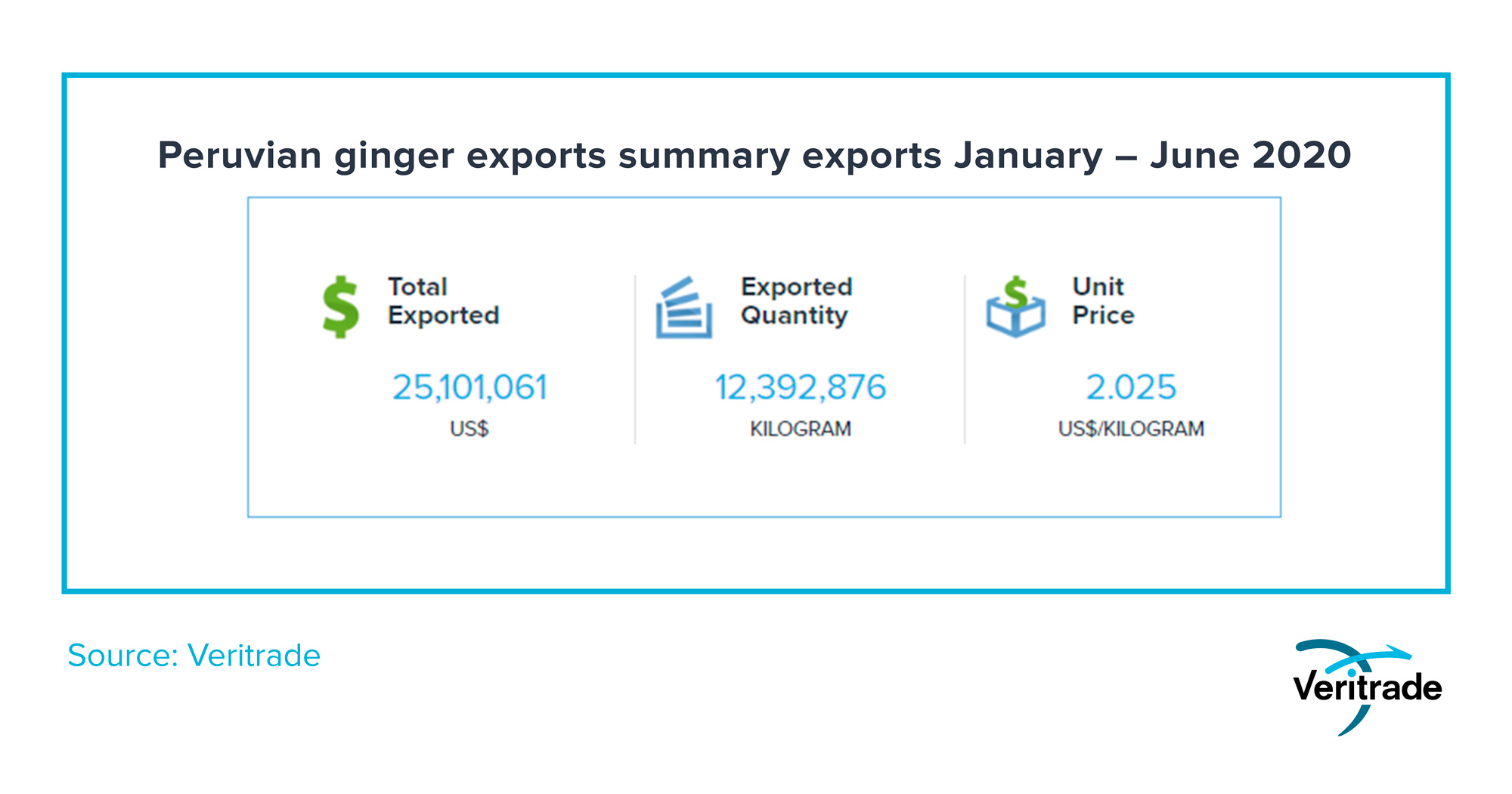
The pandemic situation has been beneficial for ginger-producing countries. Peru is the fourth producer of this tuber in the world, after China, Thailand and India, for which it has been favored.
Regarding product destinations, the country has established itself as a supplier in America and Europe. All the large markets in these regions are served, those in Europe with the Netherlands as the gateway to the old continent through the port of Rotterdam, although direct shipments to final destinations are also made. The route used is mainly maritime, with 95% participation, followed by air (4%) and land (1%).
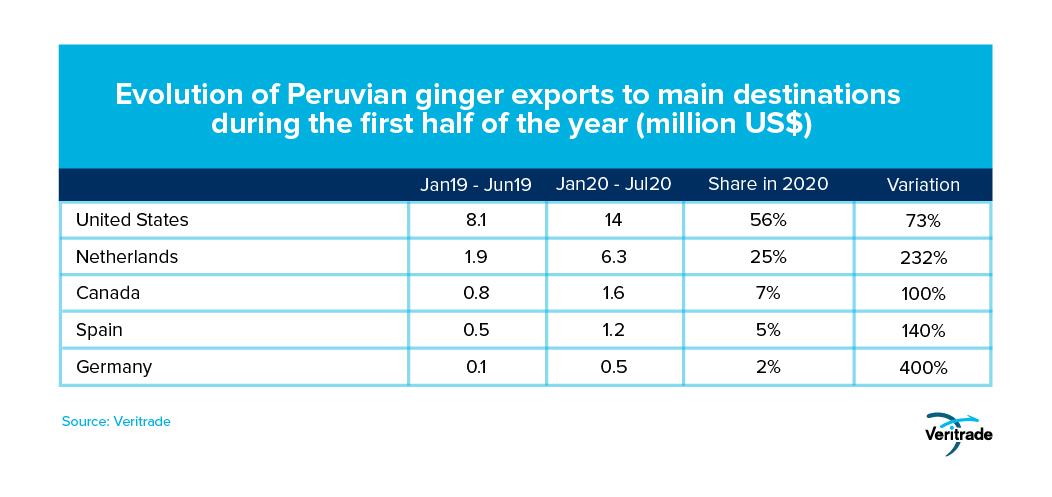
It is interesting to note the growth in Germany and the Netherlands, two markets in which consumer sophistication is higher than in the rest of the world. This could be due to the search for natural treatments to combat the effects of the flu caused by the coronavirus.
On the other hand, it is clear that the US market must be kept under its sights, so its larger scale means for exporters, in terms of capacity, to generate growth for each percentage point of increase in sales. It is more convenient to make shipments from Peru because, compared to Asian ports, the distance from the ports on the west coast is about 30% less; On the other hand, in the case of the Atlantic, it can be taken advantage of that it is not necessary to make transshipments or pay more expensive freight to cross the Panama Canal as when they come from China, Thailand or India.
In general, the recent explosion may be an opportunity to increase the participation of Peruvian ginger in consolidated markets and, especially in the incipient ones. Figures may be lower in the same months of next year when the impact of the pandemic passes, but buyers will have already established a relationship with Peruvian suppliers, which could last over time. This requires working on commercial promotion and facilitation of logistical and bureaucratic processes, with the responsibility of both parties, businessmen and the government.
For more information on the export of Peruvian ginger, you can visit the Veritrade portal.
Request your free trial at https://bit.ly/2WslpWC